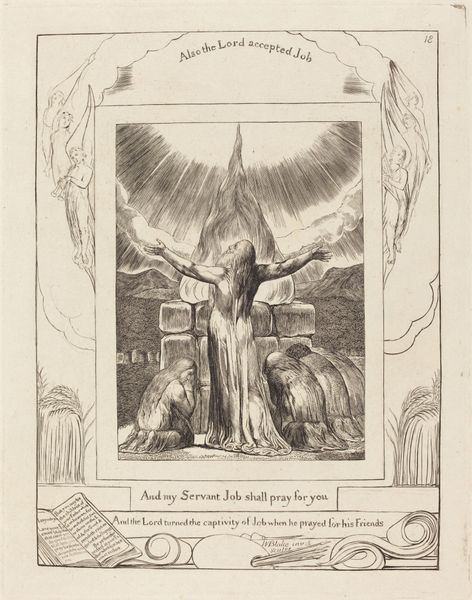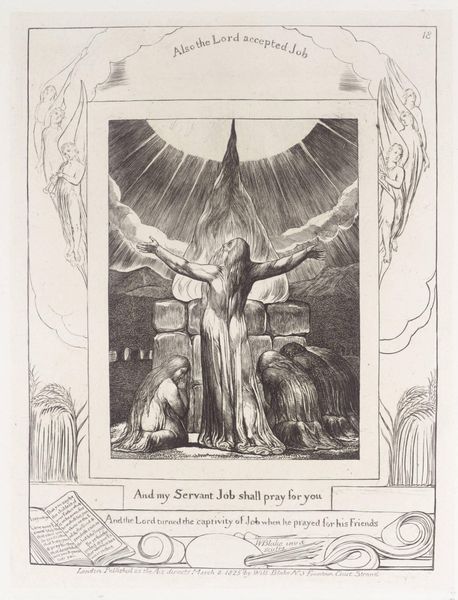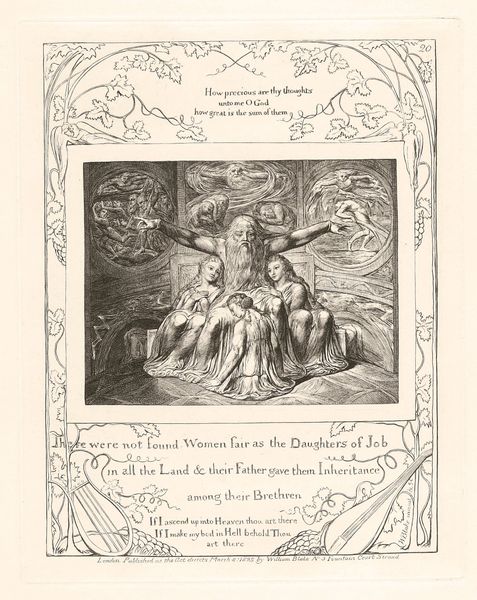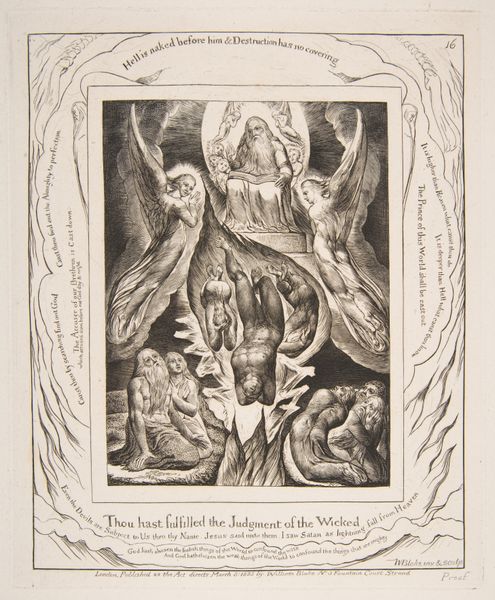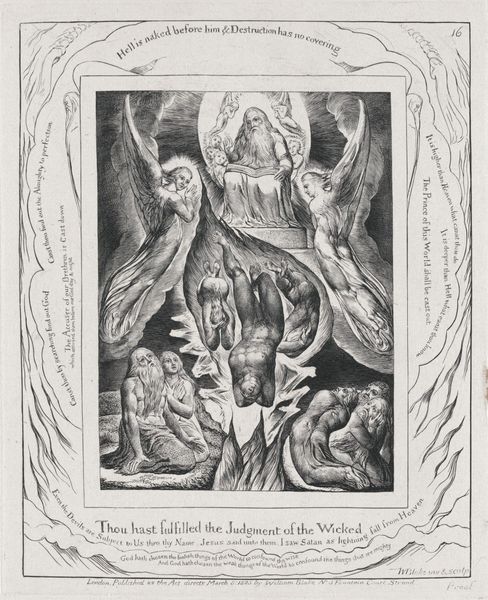
print, engraving
# print
#
pen illustration
#
figuration
#
romanticism
#
line
#
history-painting
#
engraving
Dimensions: 8 1/2 x 6 3/4 in. (21.59 x 17.15 cm) (sheet)
Copyright: Public Domain
Editor: Here we have William Blake's engraving "And my Servant Job shall pray for you," created in 1825. I’m struck by the sharp lines and dramatic lighting; it's very theatrical, almost like a stage production. What draws your eye? Curator: Immediately, I notice the materiality of the print itself. The very act of engraving, a labor-intensive process, dictates a certain linearity and precision. Blake controlled every aspect of production, challenging the conventional separation of artist and artisan. The image becomes a record of his physical labor. Editor: So the process of making the artwork is central to its meaning? Curator: Absolutely. Consider the context: Blake was deeply critical of industrializing society. His emphasis on handcrafted production is a direct response to the burgeoning factories that were displacing skilled laborers. What is the relation between spiritual enlightenment and means of production? How does Blake, an artist, locate the intersection of morality and labor within art creation? Editor: I see, he is embedding a social critique within a religious narrative, critiquing the loss of individual skill with the rise of industrial manufacturing, making this choice quite compelling for interpreting its artistic intent. Curator: Precisely. And consider how this print might have been circulated – consumed, possessed, and potentially understood within these contexts of economic change. Does thinking about its original patronage perhaps influence its accessibility as a work of 'art'? Editor: I hadn't considered the societal critiques inherent in the work. Curator: Blake challenges the whole distinction of 'high' art detached from these factors, pointing at the politics inherent to its making and, thus, interpreting art history in general through the lens of materiality and labour. Editor: It's definitely shifted my understanding; seeing it as a product of its socio-economic time and artistic intentions provides context beyond simple aesthetics. Thanks.
Comments
minneapolisinstituteofart almost 2 years ago
⋮
The mystical ecstasy is temporary although it affects all the rest of man's life. God is transformed from his manifestation as Man into the likeness of a great sun in the heavens. Also, Job finds that in prayer the great mystical descent, typified by the angels in the margins, is mildly repeated. Rebuked by the Lord, the friends ask Job to pray for them. He consents; it is the forgiveness of sins. Thereupon the Lord accepts Job and releases him from his captivity under Satan the Accuser. His prayer is one of forgiveness, self-sacrifice (represented by his cruciform attitude), an inward act since he faces inward. The flame of his sacrifice pierces the clouds that separate the worlds and reaches to the heart of God. The wheat in the margins signifies that prayer is the Daily Bread of the soul. In the lower margin is the text for Forgiveness, in a book, along with the scrolls of Blake's poems, his palette, and his burin: the arts are also forms of prayer.
Join the conversation
Join millions of artists and users on Artera today and experience the ultimate creative platform.
